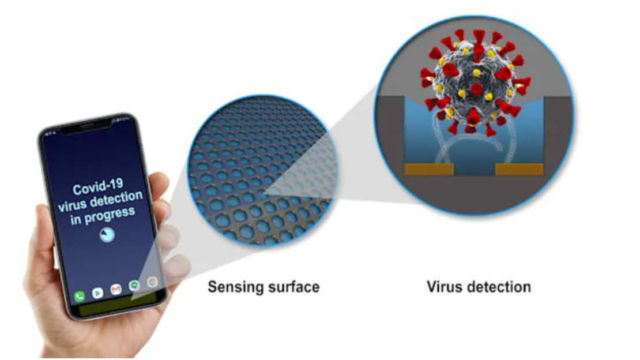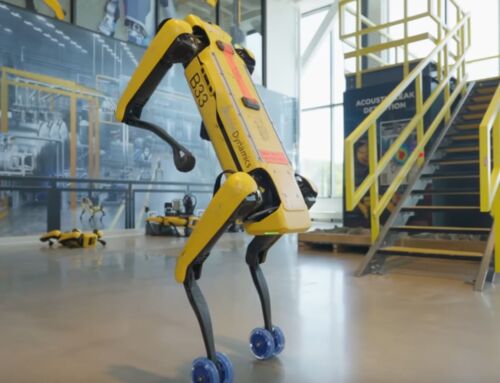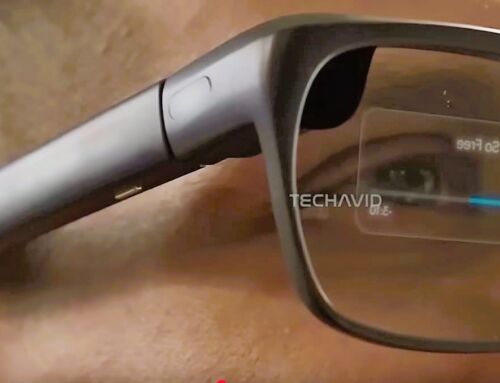Scientists are developing tiny sensors that can detect the presence of COVID-19 virus particles on screens, tables and other surfaces.
Awarded National Institutes of Health (NIH) grant to develop tiny sensors smaller than your fingertip that can detect the presence of COVID-19 virus nano-particles on screens, tables and other surfaces.
GE Research has been awarded a 24-month NIH grant (U01AA029324) of the RADx-rad program to develop miniature sensors that can detect the presence of the COVID-19 virus nano-particles on an array of different surfaces.
Image: A concept for the direct detection of minute levels of COVID-19 virus particles on surfaces by using engineered bioreceptors attached to electronic nano-sensors.
Radislav Potyrailo, a principal scientist at GE Research and principal investigator on the NIH project, said:
“One of the first lines of defense against any virus is avoiding exposure, which is easier said than done when you can’t see it. Through our project with the NIH, we are developing a sensor small enough to embed in a mobile device that could detect the presence of the COVID-19 virus.”
“We all come into contact with different surfaces during any given day, from computer screens and conference tables to kiosks at the airport and of course, credit card machines at stores while running errands. While everyone does a great job keeping these surfaces clean, we want to add an extra layer of safety by being able to detect the presence of the virus.”
source GE





Leave A Comment